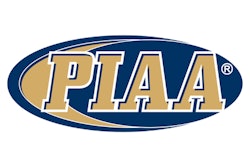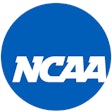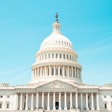
The four-year Academic Progress Rate national average for Division I teams remained steady at 984 this year, as the division marked the 20th anniversary of APR data collection. During those 20 years, overall student-athlete academic success has risen substantially.
Compared with the four-year period before the COVID-19 pandemic (2015-16 through 2018-19), the overall national four-year average across all sports increased 1 point. At the sport level, changes in the national average were small. Compared with prepandemic averages, baseball increased 1 point to 978, football fell 1 point to 963, men's basketball increased 2 points to 968 and women's basketball decreased 2 points to 981.
Additionally, over the past 20 years, 21,365 former student-athletes have returned to the classroom after exhausting their athletics eligibility to complete degrees and earn APR points for their former team. Nearly 11,000 of these individuals returning to graduate were former football, baseball, and men's and women's basketball student-athletes. These student-athletes are typically not counted as graduates in the federal graduation rate or Graduation Success Rate calculations.
Division I Committee on Academics Chair Robert Davies, president of Central Michigan, said, "Degree completion remains a priority for the Committee on Academics and NCAA. We have dedicated more than 20 years to devising effective programs and legislation to enable more former student-athletes to go back and earn degrees, thus enhancing the overall student-athlete experience long after eligibility has been exhausted."
Dave Schnase, NCAA vice president of academic and membership affairs, said, "Student-athletes have achieved incredible success in the classroom over the last 20 years, mostly due to the hard work and commitment to academic achievement by student-athletes on campuses across the country.
"In addition, the unprecedented success is in part due to the work of the Committee on Academics and its predecessor, the Committee on Academic Performance. The policy changes they made, including initial-eligibility standards and progress-toward-degree requirements, along with on-campus support for student-athletes, contributed to the high rates we are seeing now."In 1989, the Division I Degree Completion Award Program was established to provide student-athletes with financial assistance to complete their education during their five-year eligibility period. The award consists of tuition, fees, and an allowance for textbooks and other expenses.
In the past 35 years, the program has awarded over $30 million to more than 2,900 student-athletes.Additionally, in 2018 the Division I Board of Directors adopted legislation to require schools to provide degree completion funding specifically to former men's and women's basketball student-athletes. This legislation also established a fund for limited resource institutions. Schools may apply through the Degree Achievement Program for assistance in providing tuition dollars to eligible former student-athletes. This summer, the legislation will expand to require Division I schools to fund degree completion opportunities for former student-athletes across all sports who meet certain criteria.
These actions and initiatives are just a few of the many steps the NCAA has taken to prioritize academic success and increase access to higher education opportunities, promote degree completion and earn APR points.
Each academic year, every Division I sports team's APR is calculated using a simple and consistent formula. Scholarship student-athletes can earn 1 point for staying on course for a degree in their chosen major and 1 point for being retained (or graduating) at the end of each academic term. For schools that do not offer athletics scholarships, recruited student-athletes are tracked.
This is the third consecutive year of publicly reported APRs after a one-year hiatus due to the COVID-19 pandemic. In 2022, the Division I board approved the release of APR scores but voted to continue the suspension of program penalties. After further review, the Committee on Academics is not enforcing the loss of access to postseason competition for teams that have scored lower than 930. Instead, a conditional waiver is being offered this year due to lingering impacts of COVID-19.
A full list of APRs for each team can be accessed by using the APR searchable database.




































